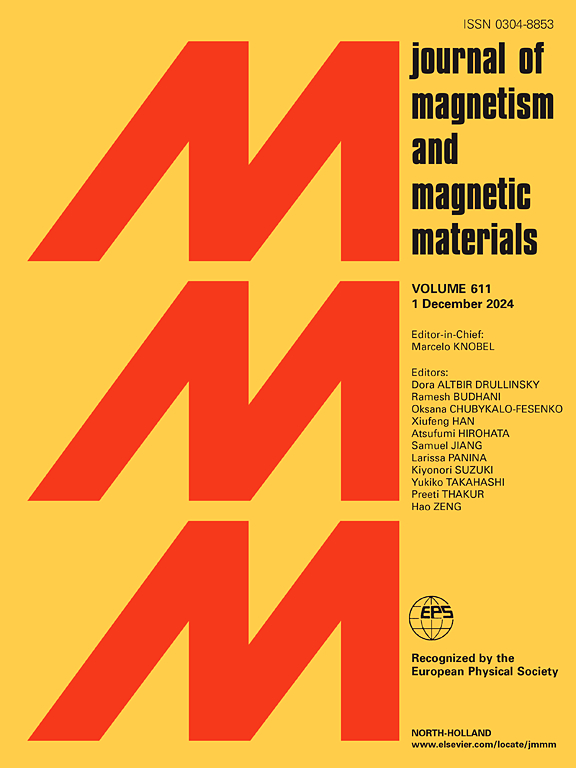Magnetocaloric effect for the topological semimetal Co3Sn2S2 due to the antiferromagnetic coupling of the bulk and surface spin-polarized phases
IF 2.5
3区 材料科学
Q3 MATERIALS SCIENCE, MULTIDISCIPLINARY
引用次数: 0
Abstract
We experimentally investigate magnetocaloric effect for the topological magnetic Weyl semimetal CoSnS in a wide temperature range. The isothermal magnetic entropy change S is calculated from the experimental magnetization curves by using Maxwell relation. In addition to the expected S peak at the Curie temperature , we obtain another one at the temperature of the hysteresis inversion, which is the main experimental result. The inverted hysteresis usually originates from the antiferromagnetic coupling between two magnetic phases. For CoSnS topological magnetic Weyl semimetal these phases are the ferromagnetic bulk and the spin-polarized topological surface states. Thus, the pronounced magnetocaloric effect at is determined by the bulk magnetization switching by the exchange bias field of the surface spin-polarizad phase, in contrast to the ferromagnetic–paramagnetic transition at the Curie temperature . For possible applications of magnetocaloric effect, Weyl semimetals open a new way to transfer from ferromagnetically ordered systems to the two-phase ones with the antiferromagnetic coupling between the bulk and surface spin-polarized phases without loss of efficiency. As the advantage we can point the higher reversibility and smaller energy costs at .
求助全文
约1分钟内获得全文
求助全文
来源期刊

Journal of Magnetism and Magnetic Materials
物理-材料科学:综合
CiteScore
5.30
自引率
11.10%
发文量
1149
审稿时长
59 days
期刊介绍:
The Journal of Magnetism and Magnetic Materials provides an important forum for the disclosure and discussion of original contributions covering the whole spectrum of topics, from basic magnetism to the technology and applications of magnetic materials. The journal encourages greater interaction between the basic and applied sub-disciplines of magnetism with comprehensive review articles, in addition to full-length contributions. In addition, other categories of contributions are welcome, including Critical Focused issues, Current Perspectives and Outreach to the General Public.
Main Categories:
Full-length articles:
Technically original research documents that report results of value to the communities that comprise the journal audience. The link between chemical, structural and microstructural properties on the one hand and magnetic properties on the other hand are encouraged.
In addition to general topics covering all areas of magnetism and magnetic materials, the full-length articles also include three sub-sections, focusing on Nanomagnetism, Spintronics and Applications.
The sub-section on Nanomagnetism contains articles on magnetic nanoparticles, nanowires, thin films, 2D materials and other nanoscale magnetic materials and their applications.
The sub-section on Spintronics contains articles on magnetoresistance, magnetoimpedance, magneto-optical phenomena, Micro-Electro-Mechanical Systems (MEMS), and other topics related to spin current control and magneto-transport phenomena. The sub-section on Applications display papers that focus on applications of magnetic materials. The applications need to show a connection to magnetism.
Review articles:
Review articles organize, clarify, and summarize existing major works in the areas covered by the Journal and provide comprehensive citations to the full spectrum of relevant literature.
 求助内容:
求助内容: 应助结果提醒方式:
应助结果提醒方式:


